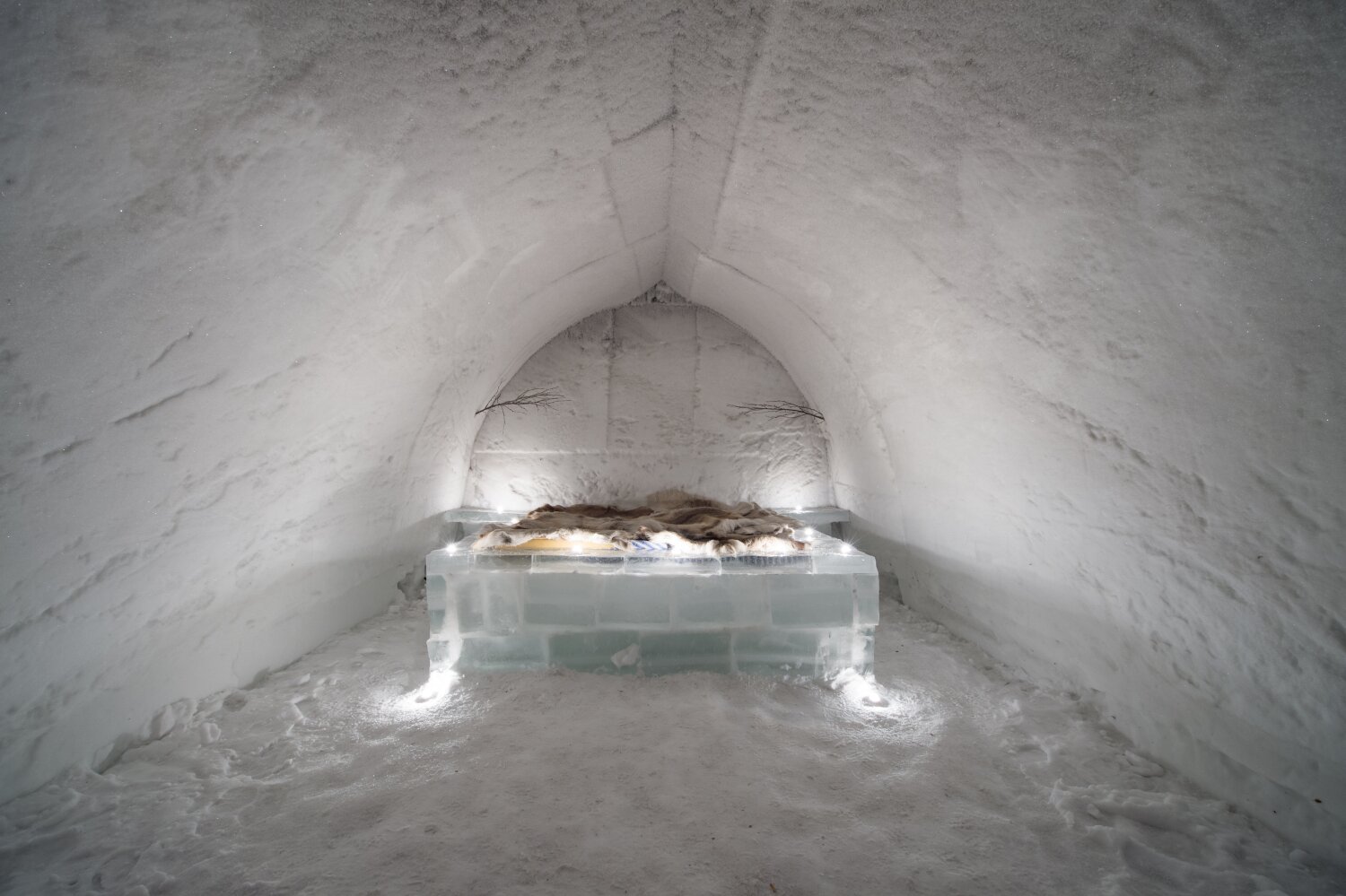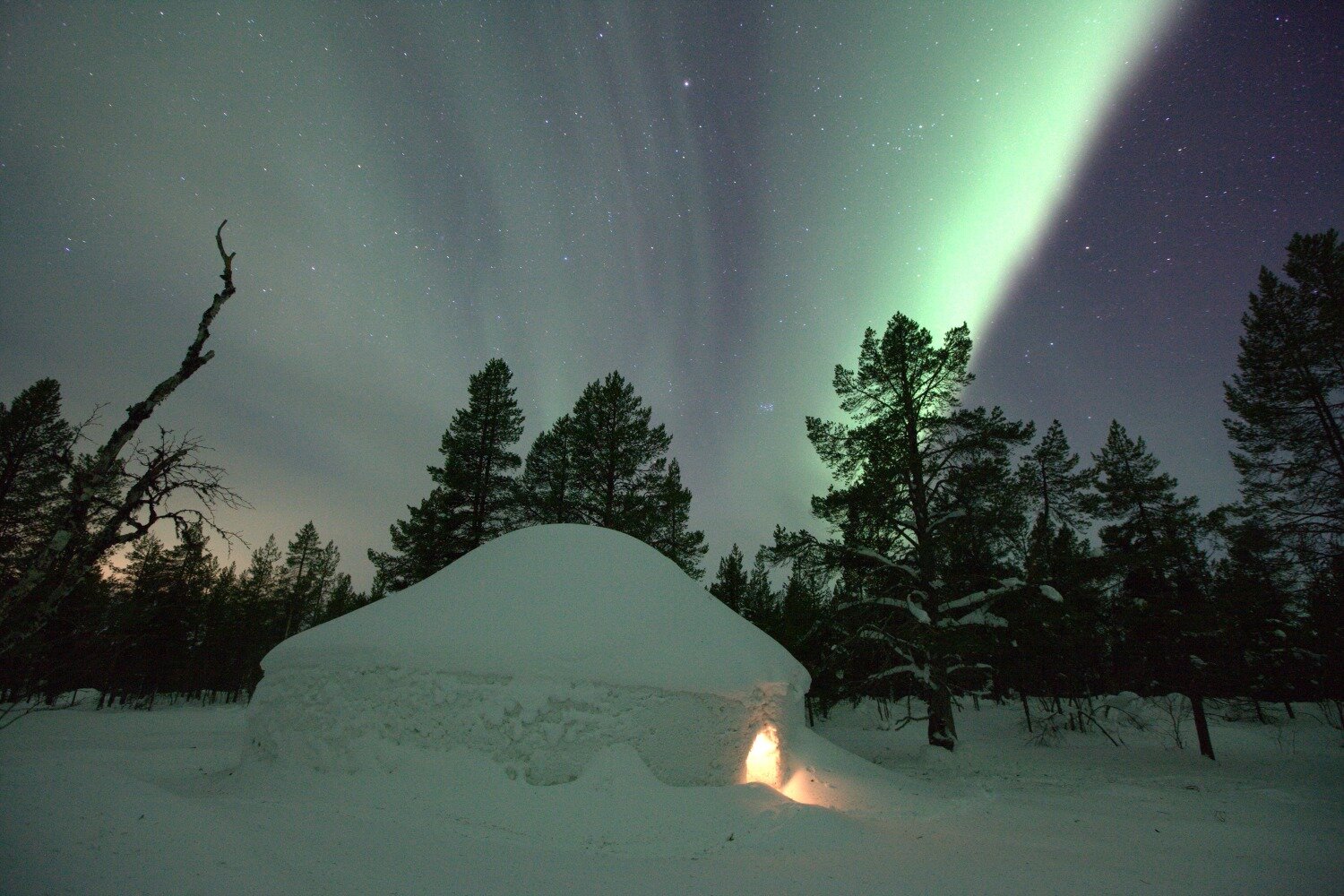Igloos keep you toasty and warm even in the worst winter conditions. But how do they do that when snow itself is naturally really cold? How does it work when, in places like Lapland, temperatures can easily drop many tens of degrees below freezing with a wind chill factor to match?
Intuition suggests an igloo shouldn't work. Why don't they melt as you sit inside, freezing you like a human icicle? Why doesn't the snow itself cool down the air inside the igloo so much that it just gets colder and colder? What about the wind? And how do you sleep on a bed of actual ice? It's fascinating.
If you're considering staying in an igloo for a night on your holiday and wondering how it keeps you warm, here's the science bit.
_w=1240_h=500_pjpg.jpg?v=202509161525)
It's an insulation thing!
Igloos are built from compressed snow. You saw it into chunks like building blocks, then stack the blocks around a circular terraced hole in the snowy ground.
Snow is endlessly interesting considering it's simply semi-frozen water. It has amazing insulating properties that make it a popular shelter-building material for hibernating animals as well as humans and creatures like bears and raccoons.
Solid ice isn't a very good insulator compared to compressed snow, simply because ice is solid while snow is filled with miniature air pockets. While it looks solid, as much as 95% of snow is actually air trapped inside tiny crystals. Because the air can't circulate very well inside the ice crystals, the heat gets trapped in there.
So how does an igloo keep you warm?
An igloo floor is never just flat like the inside of a tent. It's cut into terraces which create an upper level for sleeping, a middle level for the fire and a lower level used as a cold sink. Heavy cold air, which naturally falls, collects on the floor – ideally near the door – and stays there. And warm air, which is lighter and naturally rises, stays in the parts of the igloo people use the most, including the area they sleep in.
Because the door of an igloo is at the bottom of the structure and features at least one right angled piece of tunnel to crawl through, the powerful, freezing cold Lapland winds can't blow directly into the living space. And the little hole cut into the top of the curved roof lets smoke from the fire escape safely.
All this means it can be as cold as -50 degrees Fahrenheit outdoors but as cosy as 19 to 61 degrees Fahrenheit indoors, not always warm enough for a T-shirt but a temperature difference that'll feel really good all the same, sometimes by as much as 70 degrees warmer than the outdoors!
_w=1240_h=500_pjpg.jpg?v=202509161525)
Convection, catenoids and Reynolds numbers
Heat transfer sits at the heart of the way igloos work. When a fluid moves, it transfers heat via a process called convection. When it stays still it transfers heat by conduction, with the transfer of heat by physical contact. Put your finger on an ice cube, for example, and the ice melts at the point your finger touches it.
The more a fluid moves, the more chaotic the system, and the higher something called the 'Reynolds number' is. The bigger the Reynolds number, the more heat is transferred by convection. Because ice's thermal conductivity is low, like the thermal conductivity of air, an igloo works by stopping heat being transferred into the surroundings, even when the temperature is really low. The ice and the still, unmoving air both act as highly effective insulators.
Then there's 'catenoid' science. Catenoid denotes the shape of an igloo. The half circle shape is actually perfectly optimised to minimise structural tension, handy when snow isn't exactly the most stable material. It can melt, for example, if the temperature goes up, and it's naturally slippery even when compacted and sliced into blocks. The catenoid shape doesn't buckle or break under pressure, simply because the stresses involved push towards the sides of the dome rather than right through the centre of the roof.
_w=1240_h=500_pjpg.jpg?v=202509161525)
Building the best igloo
The finest igloos have walls the same thickness and density from top to bottom. The best igloo snow is the most compact, the most solid. Fresh snow is no good, it's far too powdery and weak. Older snow is more crunchy, a lot easier to form into shapes like snowballs, snowmen and igloo building blocks.
An experienced igloo builder will stack individual blocks up in a spiral, going round and round, gently inwards at each spiral, until the curved roof is complete. The blocks stay upright while leaning on each other, which means the resulting curved structure is remarkably strong. Get the balance right and you should be able to stand confidently on the roof without causing damage.
Originally published 14 February 2019, updated 1 August 2024
